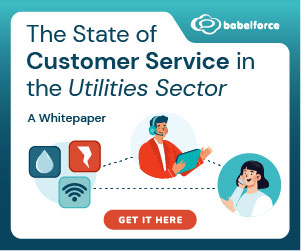Colin Gill of Akixi discusses how the experience of working in a contact centre is changing.
The Only Constant in any Industry is Change
In the technology and communications landscapes, vendors, suppliers, and businesses are constantly searching for new ways to deliver enhanced experiences to customers.
After all, today’s customer expectations are higher than ever.
No matter which vertical you work in, you can rest assured that your clients are looking for timely, personalised, and consistent service.
Whether speaking with an agent directly or taking advantage of automated self-service, these individuals expect every channel to be connected.
At the same time, we’re also dealing with a changing workplace, in an age where people prefer to work from some dispersed location, rather than a traditional office or call centre hub.
How do businesses deliver the kind of experiences customers need from a contact centre, while remaining open to the workplace revolution?
Embracing the Changing Workplace
We’re living in a world where work is no longer a place, but a process.
Team members don’t need to sit at the same desk every day to accomplish results. Instead, cloud-based connectivity, applications and mobile technology mean that we can be productive from anywhere.
With 50% of the UK set to work remotely this year (2020), it’s not only everyday office workers that are seeking digital work opportunities, but contact centre agents too.
Virtual contact centres are quickly allowing remote and geographically-dispersed agents to benefit from greater flexibility and engagement outside of the office.
The biggest driver of this new work environment? Productivity.
Remote employees are increasingly proving that they can deliver better results than their traditional office-based counterparts. Choosing your own environment for work helps you to maintain your motivation and inspiration at work.
Research from Gallup states that people who spend 3-4 days working outside of the office are substantially more engaged than the traditional office-based counterparts. This means your remote workers could help you to better achieve your goals of unforgettable customer experience.
The Demand for the Virtual Contact Centre
So, what does the rise of remote workers and the increasing demand for meaningful customer moments mean to the average contact centre?
For many companies, there’s now a growing demand for a virtual environment that can deliver the kind of always-on connections that modern employees and customers need.
With a virtualised communication hub, where conversations can be tracked, monitored, and enhanced, business leaders can serve their employees by giving them workplace freedom. At the same time, the increased happiness and productivity of your team members leads to greater customer satisfaction too.
Remember, the virtual contact centre offers benefits such as:
1. Greater hire flexibility
You’re not limited to only working with the people who are closest to your business premises. Instead, you can hire talent from around the world. What’s more, you can even use people from different time zones in your contact centre to provide 24/7 support for clients.
2. Reduced overhead costs
You don’t need to find the real-estate or pay for the electrical charges of a vast contact centre facility anymore. Your teams will have access to all the tools that they need in their own home. Your business can become software-focused, instead of always relying on hardware.
3. Improved employee satisfaction
Employees that have the option to work flexibly are more comfortable and happier in their environments. These team members are less likely to abandon your workforce, and more likely to go above and beyond for customers.
However, there are challenges to consider.
Managing the Always-On Contact Centre
As valuable as a virtualised team can be, it’s not without its challenges.
Running a virtual contact centre, rather than a physical environment means that you don’t have as much control over agent activities. It’s impossible to physically watch what people are doing, so you need to find another way to make sure that everything is running smoothly.
Tools for contact centre management, like the Akixi Presence solution, can help supervisors and managers to regain more control. Leaders in a workplace can check who’s available in the contact centre at a moment’s notice and monitor agent activity in real time.
The right tools allow supervisors to do so much more than simply provide their users with the opportunity to manage calls from remote systems and smartphones.
Digital hubs also provide managers with the opportunity to oversee their team’s activity, deliver helpful feedback, and track progress towards important metrics.
As more companies embrace the digital workplace for the sake of better employee and customer experience, digital tools allow businesses to keep their fingers on the pulse of what’s happening, without manual monitoring.
The power of the right tools leads to everything from improved customer conversations, to enhanced business metrics, and stronger client journeys.
What Does the Future Hold?
Trends like flexible working and customer experience aren’t going anywhere.
Businesses must embrace the always-on digital landscape, or risk falling behind.
Fortunately, choosing to explore the benefits of a cloud-based service for omnichannel communication could provide companies with new opportunities for efficiency and performance.
In the future, companies could provide their agents with everything they need to deliver sensational customer experience, with nothing but a cloud-based app. At the same time, this app can give agents and team leaders a 360-degree view of the interactions between customers and employees.
The age of digital transformation is helping more companies to understand the advantages of comprehensive call and contact centre solutions which don’t rely on in-office hardware.
Author: Colin Gill
Published On: 11th Mar 2020 - Last modified: 24th May 2024
Read more about - Guest Blogs, Akixi, Colin Gill, Coronavirus





































